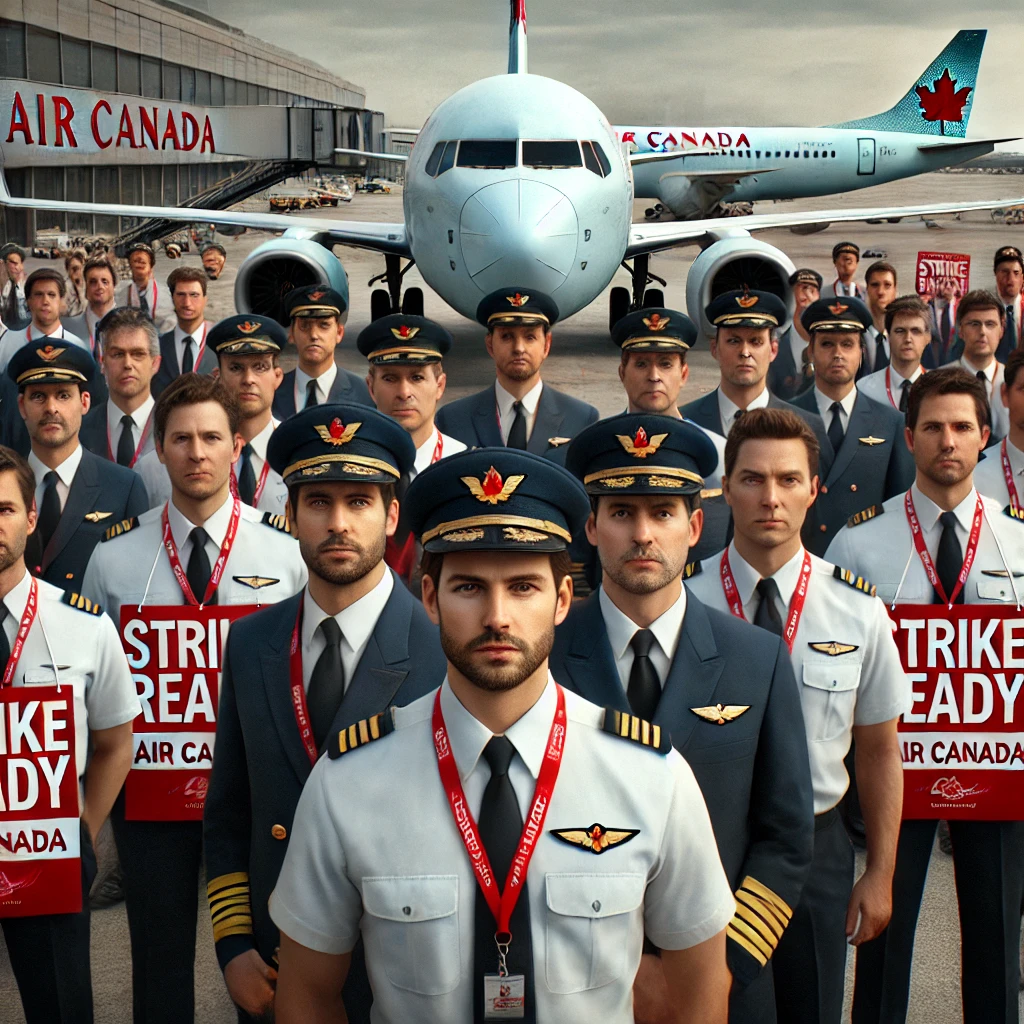
16 Aug Potential Strike Looms as Air Canada Pilots and Airline Remain at an Impasse
After months of disruptions for air travellers, more turbulence could be on the horizon as Air Canada pilots consider a strike next month. The Air Canada Pilots Union and the airline have been in negotiations for over a year but remain “far apart” on key issues, including compensation.
Despite efforts involving a private mediator earlier this year, negotiations have now moved into conciliation. Pilots are currently voting on whether to authorize a strike, with the earliest possible action set for September 17.
First Officer Charlene Hudy, Chair of the Master Elected Council representing the pilots, expressed the union’s frustration. “We’ve seen a significant gap between our pay and that of our American counterparts,” said Hudy. “Some American pilots are earning twice as much as those I represent.”
In a show of solidarity, the union is distributing lanyards, stickers, and pins emblazoned with the phrase “Strike Ready” to its more than 5,500 members.
Air Canada, however, remains optimistic. “We’ve made progress and reached agreements on several items,” said an airline spokesperson. “We are actively working to resolve the remaining issues and hope to finalize a deal in the coming weeks.”
This potential strike adds to a series of challenges for Canadian air travelers this year, including the sudden shutdown of Lynx Air, a strike by WestJet mechanics, and severe weather disruptions at Calgary’s airport.
Rick Erickson, a Calgary-based aviation analyst, noted the industry’s ongoing challenges. “The airline sector in Canada seems to be in a constant state of crisis,” said Erickson. He also highlighted that Air Canada pilots, whose 10-year collective agreement expired in September 2023 after the union invoked an escape clause, have observed their U.S. counterparts securing substantial benefits in recent years.
While Air Canada and other North American airlines have seen increased demand in recent years, the industry now faces challenges such as an oversupply of seats, high fuel costs, and delays in receiving new aircraft.

